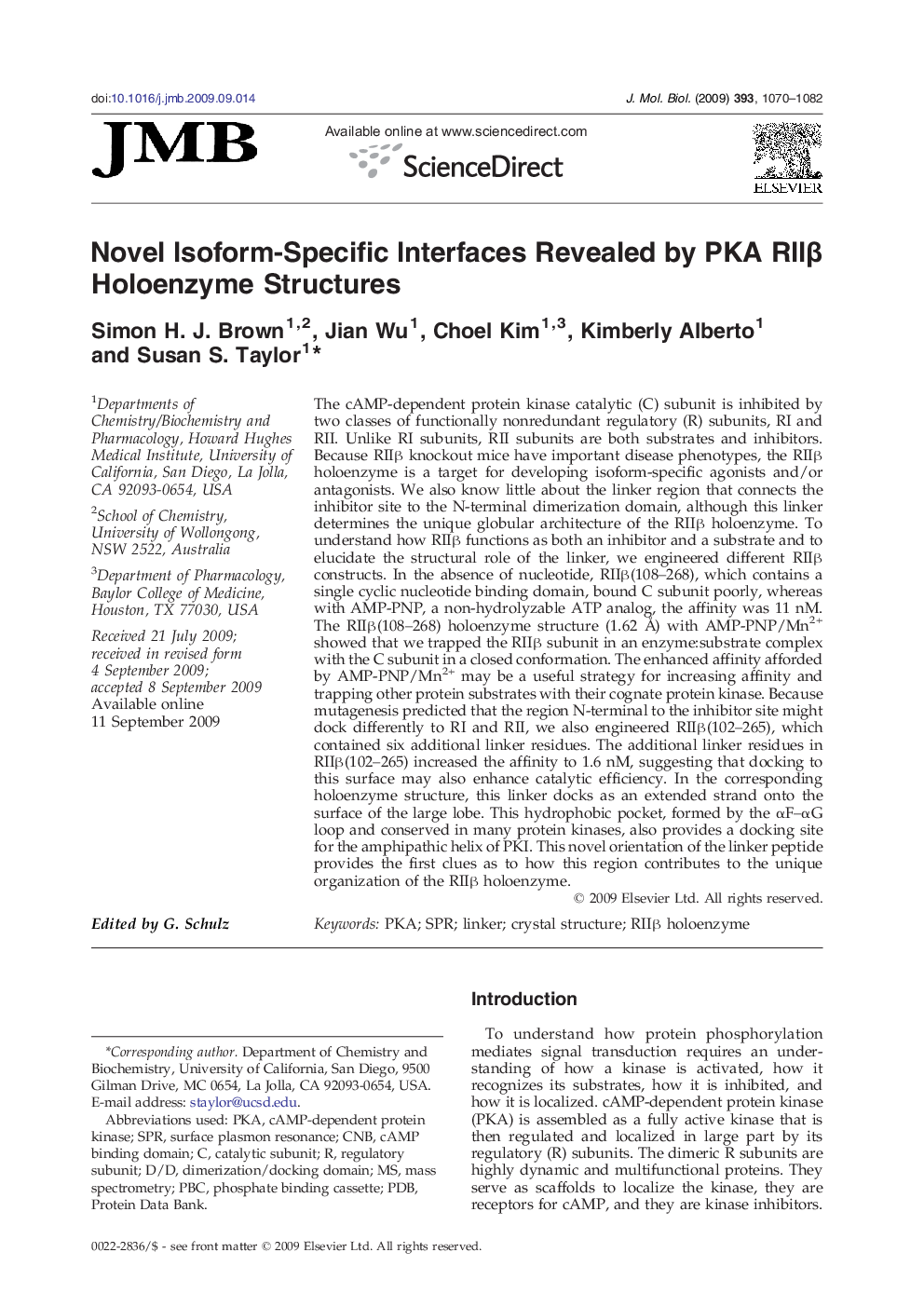| کد مقاله | کد نشریه | سال انتشار | مقاله انگلیسی | نسخه تمام متن |
|---|---|---|---|---|
| 2186321 | 1096047 | 2009 | 13 صفحه PDF | دانلود رایگان |

The cAMP-dependent protein kinase catalytic (C) subunit is inhibited by two classes of functionally nonredundant regulatory (R) subunits, RI and RII. Unlike RI subunits, RII subunits are both substrates and inhibitors. Because RIIβ knockout mice have important disease phenotypes, the RIIβ holoenzyme is a target for developing isoform-specific agonists and/or antagonists. We also know little about the linker region that connects the inhibitor site to the N-terminal dimerization domain, although this linker determines the unique globular architecture of the RIIβ holoenzyme. To understand how RIIβ functions as both an inhibitor and a substrate and to elucidate the structural role of the linker, we engineered different RIIβ constructs. In the absence of nucleotide, RIIβ(108–268), which contains a single cyclic nucleotide binding domain, bound C subunit poorly, whereas with AMP-PNP, a non-hydrolyzable ATP analog, the affinity was 11 nM. The RIIβ(108–268) holoenzyme structure (1.62 Å) with AMP-PNP/Mn2+ showed that we trapped the RIIβ subunit in an enzyme:substrate complex with the C subunit in a closed conformation. The enhanced affinity afforded by AMP-PNP/Mn2+ may be a useful strategy for increasing affinity and trapping other protein substrates with their cognate protein kinase. Because mutagenesis predicted that the region N-terminal to the inhibitor site might dock differently to RI and RII, we also engineered RIIβ(102–265), which contained six additional linker residues. The additional linker residues in RIIβ(102–265) increased the affinity to 1.6 nM, suggesting that docking to this surface may also enhance catalytic efficiency. In the corresponding holoenzyme structure, this linker docks as an extended strand onto the surface of the large lobe. This hydrophobic pocket, formed by the αF–αG loop and conserved in many protein kinases, also provides a docking site for the amphipathic helix of PKI. This novel orientation of the linker peptide provides the first clues as to how this region contributes to the unique organization of the RIIβ holoenzyme.
Journal: Journal of Molecular Biology - Volume 393, Issue 5, 13 November 2009, Pages 1070–1082